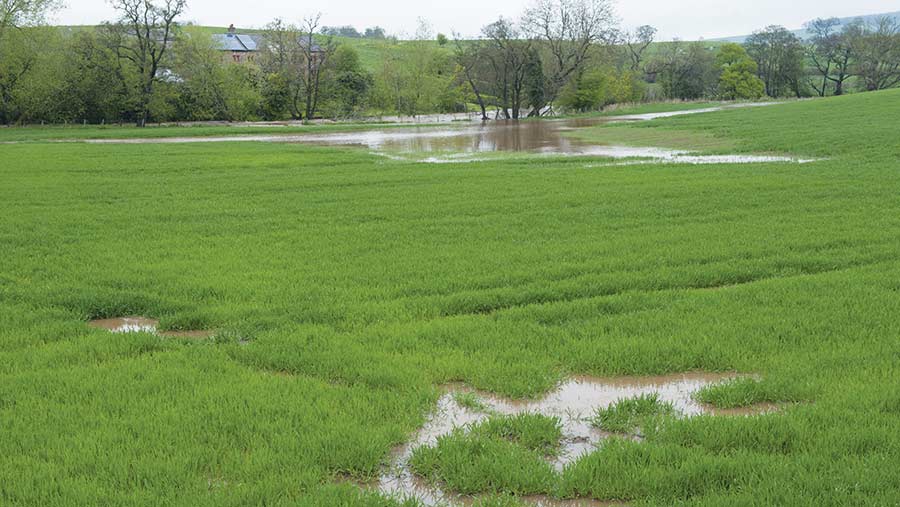Poor farmland drainage and soil pH hindering grass growth
 © Wayne Hutchinson/FLPA/Rex Shutterstock
© Wayne Hutchinson/FLPA/Rex Shutterstock Poor farmland drainage and unsatisfactory levels of soil pH could be seriously hindering grass growth on UK farms.
According to Rob Burtonshaw, a land drainage contractor from Farm Services, much of the farmland in the UK has not been drained since the 19th century.
An Adas report from 1987 revealed about 50,000ha of drainage ceased to function properly at the time, although that figure has likely mushroomed, he added.
“There are many reasons to drain fields. But the [main] reason we drain is to increase yields,” explained Mr Burtonshaw.
See also: Six step guide to assessing soil compaction
He believes cost is prohibiting many farmers from draining their land, with prices ranging from about £2,000-£2,500/ha.
“Draining is a capital investment, but if they are installed correctly and they remain undisturbed you would hope it would work for a minimum of 25 years,” he told farmers at Ireland Genetics’ conference in Tewkesbury, Gloucester (see his top tips, below).
Independent grassland adviser Gareth Davies said badly drained soils were contributing to poor soil indices.
He said soil samples conducted by NRM in 2014 showed:
- Only one-third were at target levels for phosphorus
- Less than one-third were at target for potassium
- Average pH has fallen from 6.3 to 5.9 over the past 20 years
- Only 32% of samples were at recommended magnesium levels.
Mr Davies said this proved livestock farmers were still not getting soil fertility levels right and were in fact lagging behind their arable counterparts.
“Grassland farmers had higher magnesium levels than arable farmers, but arable farmers had an average pH of 6.6. Therefore the growing conditions for livestock farmers are way poorer than arable farmers.”
He added: “Farmers in high rainfall areas require 5t/ha of lime every five years just to maintain their pH status.
“Levels of pH on a lot of farms are way below where they needs to be. There are a lot of farmers spending a lot of money on fertiliser in this country, but I think they would be much better off spending a proportion of it on lime.”
Top tips to improve farm drainage
- Work out where your ditches are and clear any blockages.
- Make sure drainage outlets are running.
- The cheapest way to improve your drainage is to use a mole plough. The more you encourage water to sink into soils, the better your drainage will be.
- One of the most important things with drainage design is working out where the wet patches are. There is no point in draining the whole field. Record wet areas of the field using a fencing stake and don’t leave it until it’s dry or you will forget.
- Find any old drainage systems on Google Maps. Any straight, regular patterns are likely to be land drains (although you should watch out for gas mains as they look similar).
- Alternatively, look at old drainage plans. All older grant-aided schemes had to draw a completion plan (but don’t confuse these with proposals).
- Consider the use of woodchip bioreactors to reduce nitrate run-off. Water is routed through a buried trench of woodchips and the bacteria (denitrifiers) ingest nitrate.
- Gravel back accounts for up to 40% of the cost. However, cheaper forms of permeable fill can be sought in an attempt to reduce bills. The best gravel to use is something that is rounded and fairly small in size to give you a bigger surface area and stop water leaking through small gaps. Ideal size is 6-10ml (£25/t).
